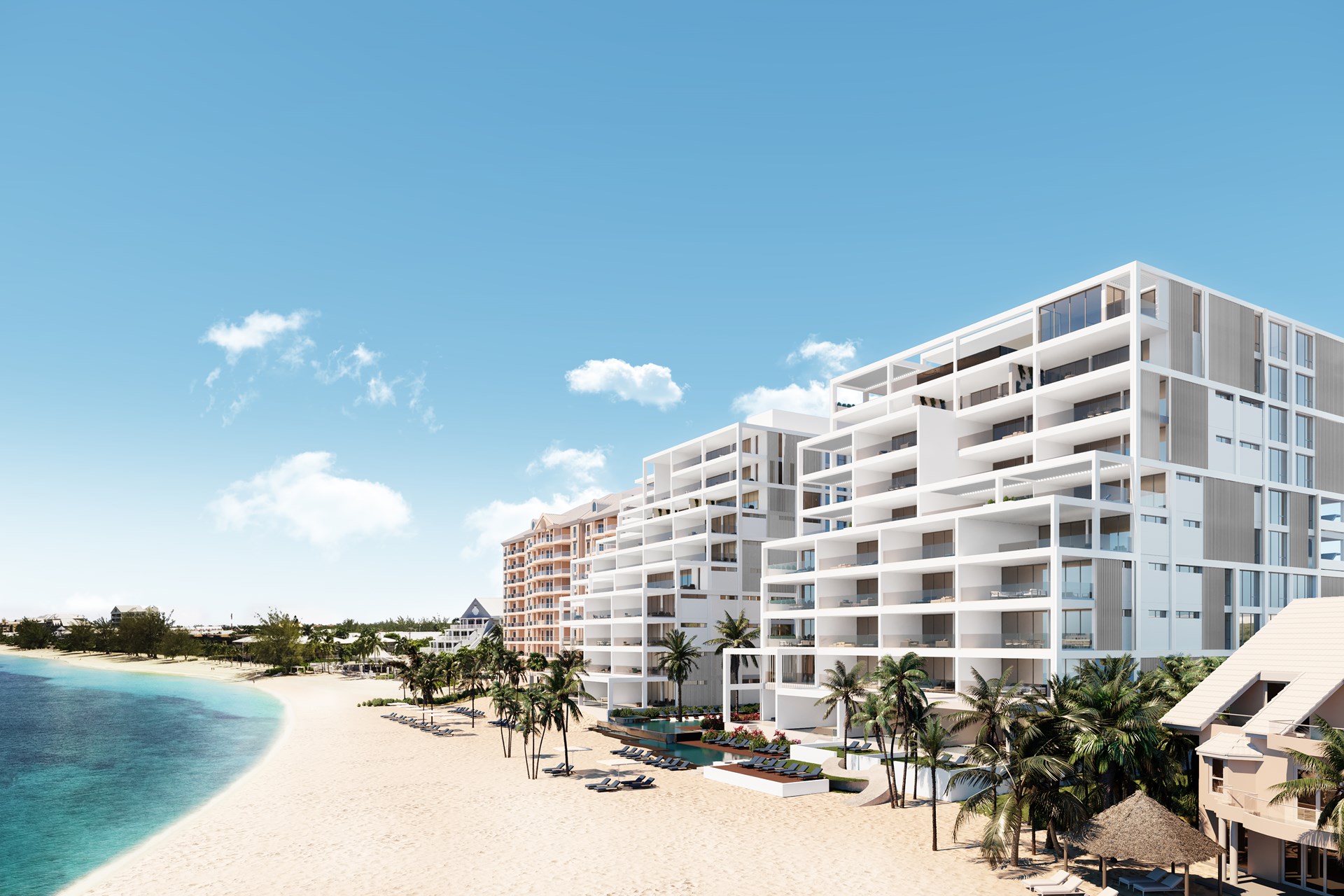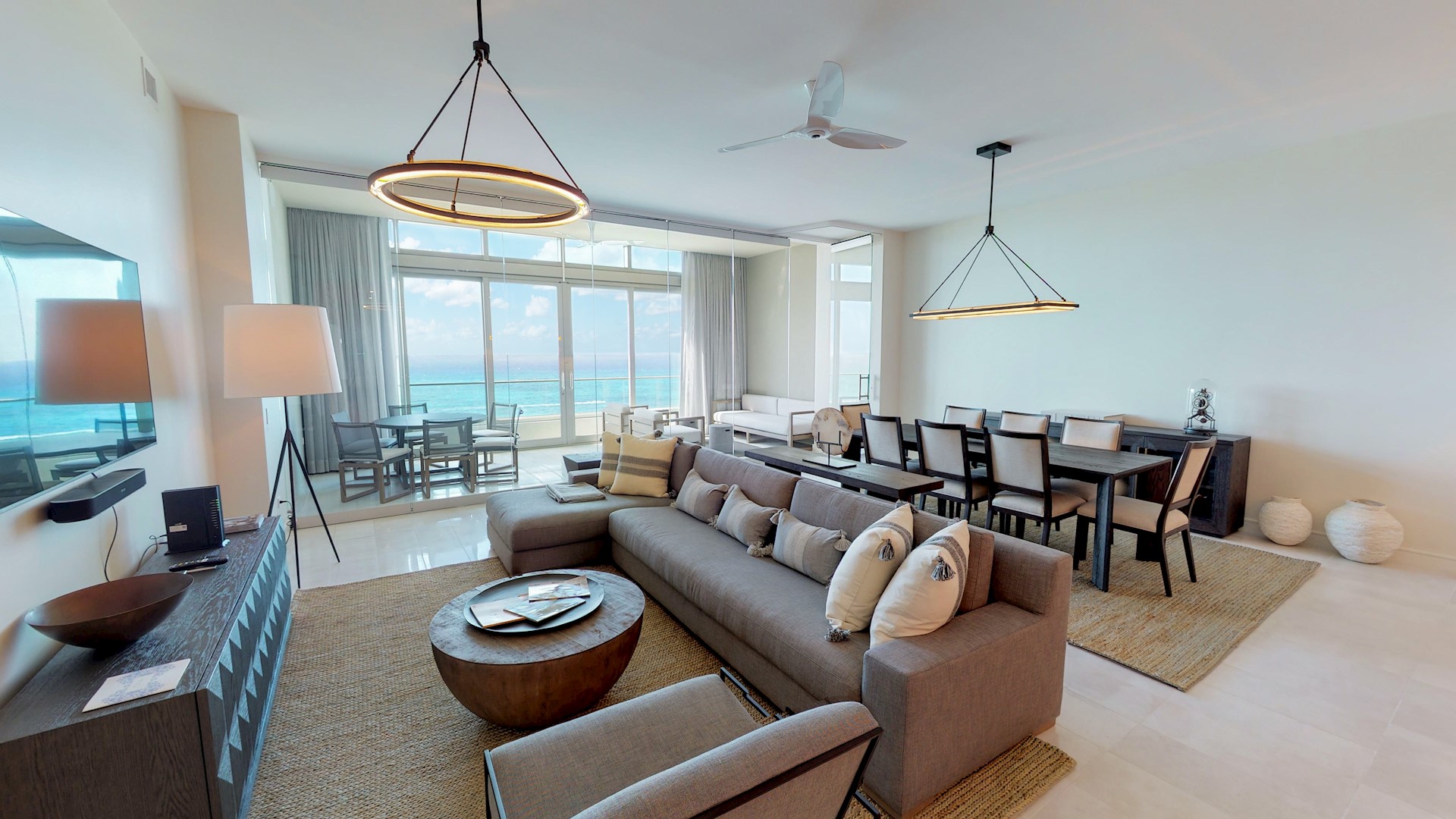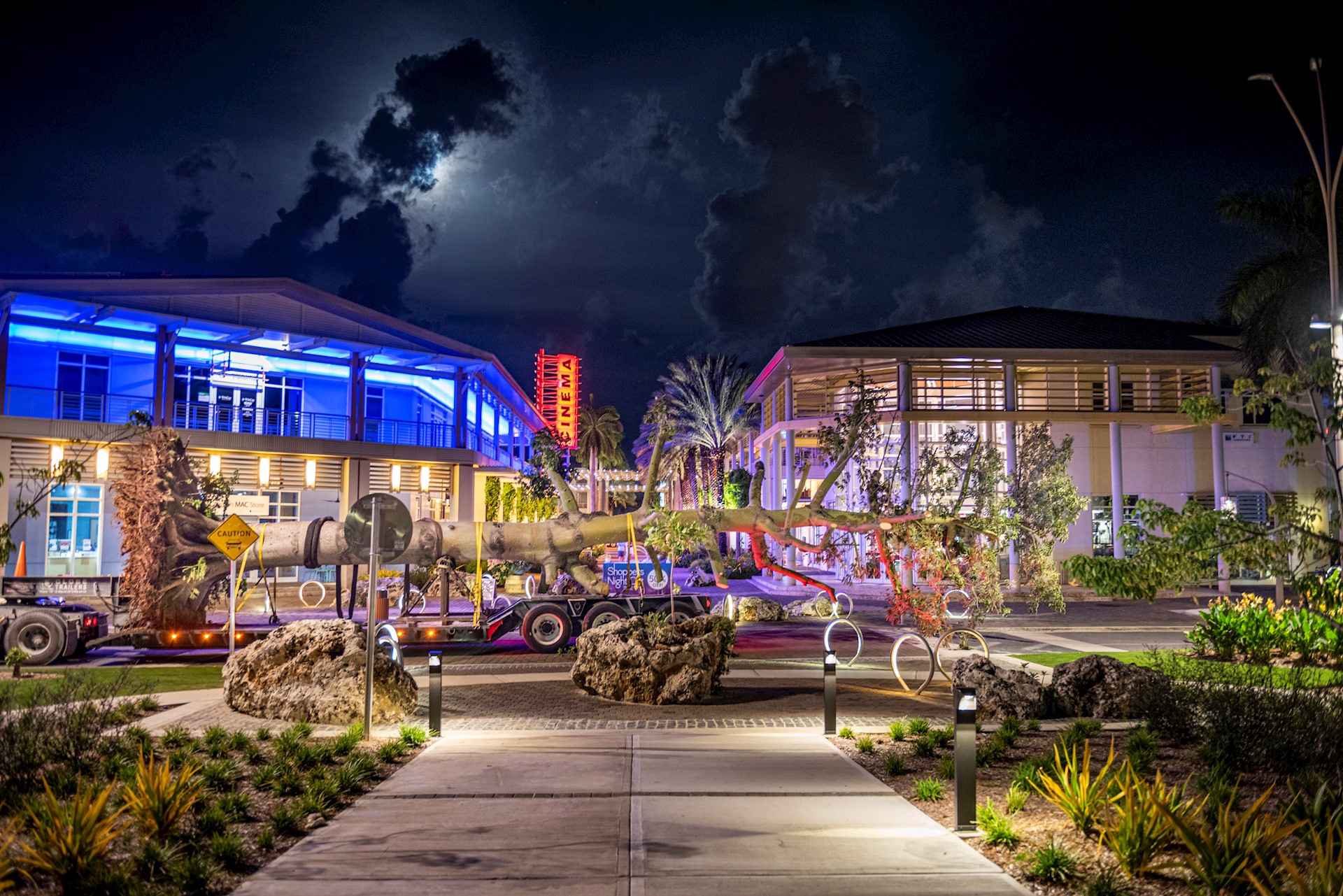
A recent article in "Luxury Defined," the Christie’s International Real Estate blog, discusses how trees can make a statement in top architecture and celebrates the integration of arboreal wonders in architectural design.
Such reverence for trees is nothing new at Dart. More than 25 years ago, the Dart nursery began cultivating hundreds of species of plants and trees as part of Ken Dart’s vision for the New Urbanist town of Camana Bay. He recognised that trees and landscaping are just as important as a building’s design and that green spaces with mature, shady trees are an integral part of a thriving community.
Today, Dart commercial and residential properties in the Cayman Islands honour trees in countless ways. From the mighty kapok trees standing tall at the entrance at 89 Nexus Way and the golden Cassia fistula that crowns Cassia Court in Camana Bay, to the impressive banyan trees welcoming guests along the entry drive to Kimpton Seafire Resort + Spa, Dart’s devotion to trees is a love story and long-term commitment.
A MASTER PLAN
Since Camana Bay is a master-planned community, the landscape design is part of the overall plan. The level of detail in the Camana Bay landscape design is extensive and challenging to deliver and maintain.
“Designing a landscape is only the first piece of the puzzle,” says Dart Senior Manager Landscape Design and Horticulture Whit Connors. “For these designs to flourish, many pieces need to fall into place, from procurement and installation to maintenance and arboriculture. It’s a web of factors that hold together the design and having it all function properly and withstand the test of time is the challenging part.”
An example of some of the intricacies of the landscape design can be found in the three Camana Bay roundabouts along the Esterley Tibbetts Highway.
Just south of the Town Centre by the southern entrance of Cayman International School, three hefty baobabs, or Adansonia digitata — a species known to live more than 1,000 years — show off their colossal trunks and mighty branches. Further north, in the six-leg roundabout, a collection of fig trees from the Ficus genus mix with royal poincianas — the spectacular red-blooming trees of summer — to greet people entering the Town Center. The centerpiece here is a massive local "strangler fig," which was transplanted from the Dart nursery after almost a year of careful root pruning. At the northernmost roundabout, a magnificent kapok flourishes after its relocation in October 2019 from the original Esterley Tibbetts Highway, a mammoth endeavour involving extensive planning and heavy equipment.
The placement of these majestic trees at these particular roundabouts is not only the result of thoughtful design, but also part of a meticulous and never-ending cultivation and maintenance process.
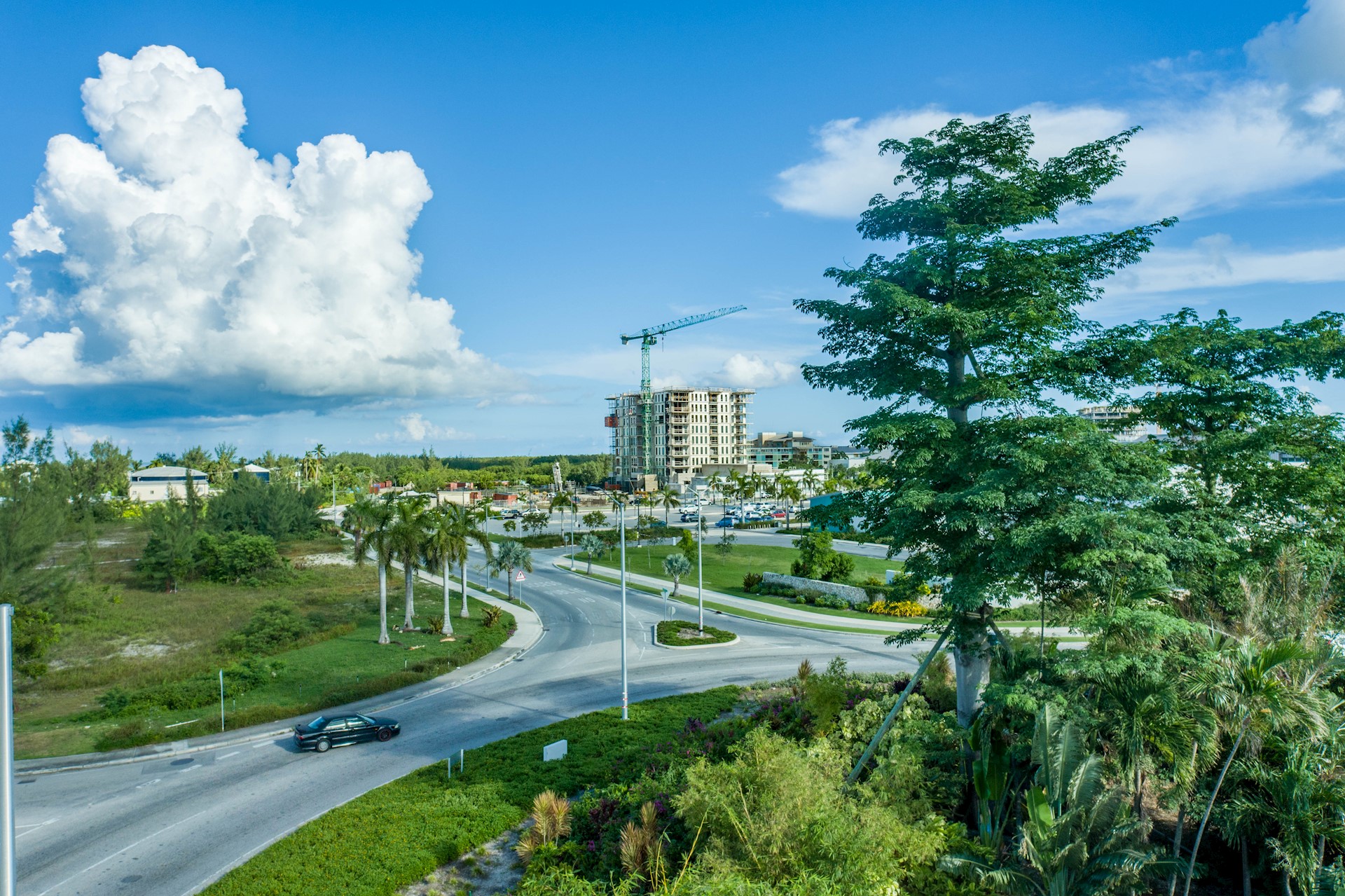
COHESIVENESS
Not far from the northern Camana Bay roundabout, construction is underway on "Kapok," the Town Centre’s next mixed-use building. The mighty kapok tree in that roundabout stands as an inspiration for the building's namesake.
“Members of the design team loved the kapok tree on the roundabout so much that they folded it into the concept of the building and the specimens within the landscape,” says Dart Senior Design Manager - Landscape Architecture Nicholas Forari Denney. “The team creatively conceived the podium level as being symbolic of the Kapok's wider base, which continues up to horizontal elements mimicking the tree branching out.”
Denney says the landscape design teams always work closely with the architectural design team in order to achieve a cohesive narrative.
“We have a back-and-forth engagement between our architecture and landscape teams and we play off each other,” he says.
This can also be seen with the kapok trees in front of 89 Nexus Way, which Denney says act in a sentinel-like way as you enter the building, and at Cayman International School, where tall windows are emphasised by rows of Phoenix palms.
“It’s absolutely stunning to walk down the boulevard and see the architecture and landscape really performing in unison with one another," Denney says.
BEYOND TROPHIES
It is not enough to have trophy-specimen trees that are stunning to behold or to have living metaphors of the attributes of Camana Bay and those occupying its confines.
During the planning stages of any project, Dart’s landscape design team examines site-specific ecological and historical factors that can inform architectural design while preserving native species, Connors says.
“Not only does this ensure we’re being ecologically responsible, it also allows us to provide historical context or stories around plants and trees that may inspire the architectural narrative.”
Over the course of the last two decades, Dart has preserved and protected thousands of tropical plants and trees.
“When you look collectively at Dart properties, there’s an overwhelming sense of lushness, colour and diversity," says Connors. "Every single seed, shrub and tree has been planted with a very specific purpose in mind.”
Denney says the high level of planning and skill that go into developing and maintaining the landscaping at Dart properties is "a key differentiator for us."
“The amount of thought, energy and detail that goes into something as simple as putting a tree into the ground is remarkable.”
This article originally appeared in the October 2021 print edition of Camana Bay Times.
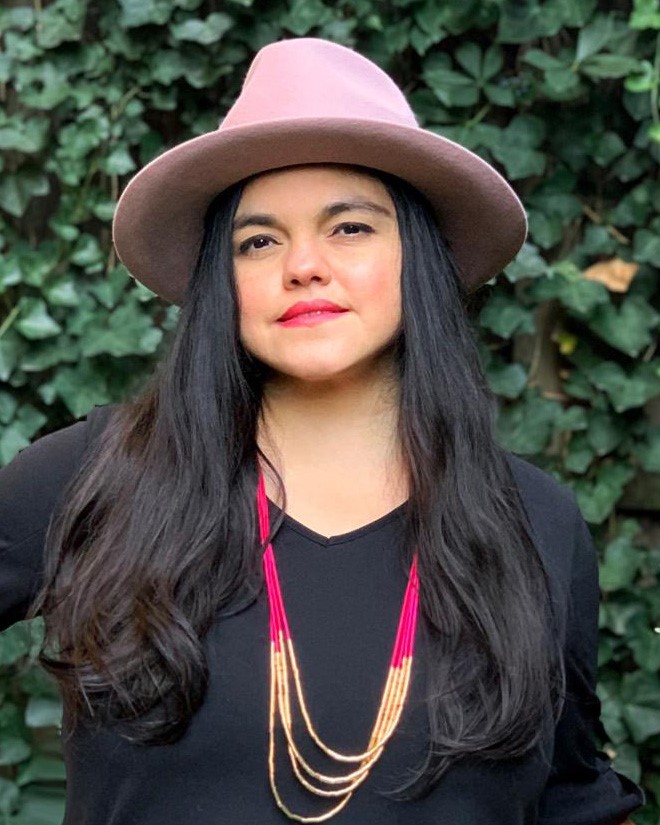
About the author
Andrea Lumsden has worked with Dart since 2013 and has been writing professionally since 2003. Graduating from university with a BA in Communication, Andrea has worked with clients across a range of industries, including financial services, hospitality and real estate. Raised in the Cayman Islands, she’s a bookworm at heart who enjoys cooking and travelling with her husband and three children. Find her in Camana Bay reading a good book and savouring the ocean breeze.
